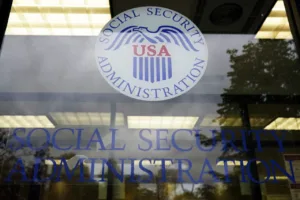Why this balance matters
Student loan debt affects millions of Americans and can compete directly with retirement saving. Carrying high-interest student loans while delaying retirement savings reduces the time compound returns have to work for you. Conversely, ignoring loan repayment to save aggressively can leave you exposed to cash‑flow shocks or rising interest costs. The goal is a practical plan that reduces lifetime interest and keeps retirement progress steady.
Estimates show total U.S. student loan debt is roughly $1.7 trillion, underscoring how common this tradeoff is for households today (Federal Reserve). For actionable steps, think in terms of cash flow, interest economics, and employer benefits.
A simple decision framework (in my practice)
When I help clients, I use a three‑step approach that is straightforward and repeatable:
- Protect the downside: build a starter emergency fund of $1,000–$2,000, then work toward 3 months of essential expenses before making aggressive moves. This prevents new borrowing when emergencies occur. (Consumer Financial Protection Bureau)
- Capture free money: always contribute at least enough to your employer 401(k) to get the full match. That match is an immediate, guaranteed return on your savings—often better than the benefit of prepaying student loans.
- Compare interest and expected returns: prioritize extra payments toward high‑interest student loans (typically private loans or high‑rate PLUS loans). If your loan interest rate is lower than your expected after‑tax investment return and you’re getting an employer match, it often makes sense to keep a steady retirement contribution while making required loan payments.
This framework keeps clients out of the “all‑or‑nothing” trap and makes steady progress on both fronts.
Practical steps and percentages to try
-
Tier 1: Employer match first. Contribute enough to get the full employer match, even if it means slower extra loan payments. The match is essentially free money.
-
Tier 2: Required loan payments and emergency fund. Make contractually required student loan payments and continue funding your emergency reserve to 3 months of expenses.
-
Tier 3: Split discretionary dollars. After the above, allocate additional money between loans and retirement. A common split I use with younger clients is 60/40 or 50/50 toward extra loan principal vs retirement contributions until the emergency fund reaches 3–6 months.
Example: Net monthly income $3,500. Employer matches 3% of pay. Budget might look like: 3% to 401(k) for match, $400 required student loan payment, $300 to build emergency fund, then split the remaining discretionary $600 as $360 extra toward loan principal and $240 additional to retirement.
When to prioritize accelerated loan repayment
Prioritize extra payments on student loans when:
- The loan interest rate is meaningfully higher than your expected after‑tax investment return. For example, private loans or PLUS loans with rates 7%+ are often best paid down aggressively.
- You have a short‑term goal that requires debt freedom (e.g., qualifying for a mortgage or high debt‑to‑income ratio issues).
- You’re risk‑averse and would prefer guaranteed savings from eliminating debt (the “psychological ROI”).
If loans are low‑rate federal direct loans (fixed, historically lower rates), the math often favors at least modest retirement contributions alongside required payments.
Strategies specific to federal loans
Federal loans offer tools that change the calculus:
-
Income‑driven repayment (IDR) plans can reduce monthly payments and free cash for retirement contributions. If you qualify, an IDR plan may be a temporary tool while you build retirement savings. See our detailed guide to income‑driven repayment for graduate students for plan specifics and eligibility: Income‑Driven Repayment Plans for Graduate Students.
-
Public Service Loan Forgiveness (PSLF) and certain employer repayment programs can change priorities—if you’re on a path to forgiveness, keeping payments low and prioritizing retirement may be appropriate.
-
Forbearance and deferment have costs; use them only when necessary. For borrowers who need help deciding between suspension and rehab, our comparison can help: Forbearance or Rehabilitation? Choosing the Right Student Loan Relief.
Refer to the Department of Education and Consumer Financial Protection Bureau for program updates and eligibility rules.
Employer-based help and tax considerations
Many employers now offer student loan repayment assistance (SRA) as part of benefits packages. If your employer offers SRA, you should factor that into your plan. Employer assistance can be taxable to employees depending on current law but still represents a financial boost. Learn how employers structure these programs and the tax considerations in our employer guide: Employer Student Loan Repayment Assistance: How It Works and Tax Considerations.
Tax items to watch:
-
Student loan interest deduction: The IRS allows a deduction for interest paid on qualified student loans (see IRS guidance). Eligibility and phaseouts change over time—check the IRS page before assuming eligibility: https://www.irs.gov/. (Note: the deduction phases out for higher incomes.)
-
Retirement accounts (401(k), Roth IRA): 401(k) contributions reduce taxable income for traditional plans; Roth contributions don’t provide an upfront tax break but grow tax‑free. Choosing between Roth and traditional can depend on current tax rates, expected future rates, and whether you’re prioritizing tax‑advantaged growth while managing loan payments.
A practical budgeting worksheet (sample)
- Income (take‑home): $4,000
- Employer 401(k) match target: 3% = $120 (contribute at least this)
- Required loan payment: $400
- Emergency savings target contribution: $300
- Living expenses (rent, food, transport): $1,700
- Discretionary remainder: $1,480
- Additional loan principal: 50% = $740
- Additional retirement (Roth IRA/401(k)): 50% = $740
Adjust the split depending on loan rates and goals. If your high‑rate loan is above 7%, consider shifting to 70/30 toward loan paydown.
Common mistakes I see
- Skipping the employer match. Clients who forego the match often regret it because the lost compounding effect compounds over decades.
- Letting emergencies derail progress. No emergency fund frequently leads to new high‑interest debt (credit cards), which is costlier than student loans.
- Not revisiting the plan after major life events (pay raises, job change, marriage). Reassess and rebalance annually.
When refinancing makes sense—and when it doesn’t
Refinancing federal loans into private loans can lower rates if you have excellent credit, but you’ll lose federal protections like IDR, deferment, and PSLF eligibility. I typically advise:
- Consider refinancing private loans or high‑rate federal loans only if your rate drop is meaningful and you don’t need federal benefits.
- Keep a portion of monthly savings flexible to handle potential rate increases if you have variable‑rate debt.
For details on refinancing risks, see our article on refinancing student loans with personal loans: Student Loan Refinancing with a Personal Loan: Risks to Consider.
Example timelines
Scenario A — Low‑rate federal loans (4.5%), employer match available
- Year 1–5: Contribute to match, keep required payments, split discretionary savings 50/50 to loans and retirement. Over 20–30 years, retirement growth typically outpaces the benefit of accelerated loan payoff.
Scenario B — High‑rate private loan (9%)
- Years 1–3: Prioritize aggressive paydown of high‑rate loan after securing 3 months emergency fund and employer match. Shift savings to retirement once loan is reduced to manageable levels.
Tools and next steps
- Use a loan amortization calculator to see how extra payments reduce total interest and shorten the payoff timeline.
- Run a retirement projection that includes employer match and the assumed contribution schedule to compare outcomes of different splits.
- Reassess annually or after salary changes.
Resources and authoritative guidance
- Federal Reserve — data on aggregate student debt and household finances (search “Federal Reserve student loan debt”).
- Consumer Financial Protection Bureau — guides on managing student loan payments and repayment options: https://www.consumerfinance.gov/
- IRS — rules for retirement accounts and student loan interest deduction. Check the IRS site for current phaseouts and limits: https://www.irs.gov/
Quick checklist
- Contribute to employer match: yes/no?
- Starter emergency fund in place: yes/no?
- Loan interest rates reviewed and prioritized?
- Consider IDR or forgiveness programs if eligible?
- Reassess plan at least once per year.
Professional disclaimer: This article is educational only and is not personalized financial advice. Your circumstances may require tailored guidance. Consult a qualified financial advisor or tax professional before implementing a strategy.
If you’d like, I can walk through your numbers and illustrate three custom allocation scenarios (aggressive repayment, balanced, and retirement‑first) using your loan balances, interest rates, employer match, and monthly cash flow.



